July 5 – July 18, 2021
We decided in early June to finish our trip at the end of July, drive to Golden to fix up and sell the trailer, and move on to the next thing in life with no idea as to what that was. We also decided to take the last few weeks of our journey to just sit somewhere comfortably and enjoy the time. Sort of a vacation for wanderers if that’s a thing. Our initial idea was to look for a spot along the coast of Washington but that proved difficult based on the crowds of campers already in all the good camping spots for the summer. Then it occurred to us that Klamath, where we were currently sitting, checked all the boxes: great trails, low-use roads, water, and best, a cool climate and we didn’t need to go anywhere. So we booked a spot at Kamp Klamath and made it happen, never regretting a moment of it.
The Tone
The opening sentence of Steinbeck’s novel, Cannery Row, reads, Cannery Row in Monterey in California is a poem, a stink, a grating noise, a quality of light, a tone, a habit, a nostalgia, a dream. This sentence intrigued me with its brilliance and for some reason, this sentence remained in my thoughts while spending time in Klamath. The relationship wasn’t necessarily the words he used as much as the way he used them to set the tone for the story. For it was the tone of this place that captured our attention.
Klamath from the start made me think, dream, and breathe. It was a befuddling combination of interesting, wild, beautiful, and a magical stretch of land. Visually, it seemed at times a mystical place of imagination of the natural where trolls might live beneath a bridge, a place where personalities of the outcast, simple, and impoverished lived. The land provided a healthy environment supporting a smorgasbord of wildlife all feeding on each other, by far one of the most interesting places and cultures we’ve visited.
The Place
Klamath sits in one of the more remote sections of the Northern California Coast, about 20 miles south of Crescent City, 30 miles south of the Oregon border, and about 50 miles north of Eureka. It is surrounded by the Redwood National Park, reservation land, the Klamath River, the Pacific Ocean, and accessible only by the 1. A place once created on the back of the timber industry, scaled back to save the tall redwood trees from extinction. There were signs posted throughout the Redwood National park celebrating the history of this effort, an occasional truck hauling smaller new growth harvested trees, and dilapidated buildings in small towns that once serviced the booming timber industry. The land is a rain forest where the coastal mountains meet a wild river colliding with the huge ocean. The temperatures are the most delightful of any in the USA if your goal is avoiding the summer heat. The climate is kept moist and cool by the winds off the cold ocean water and a low fog that rolls in and off the shore each day based on the fluctuating inland temperatures. Daily highs here were in the low 70’s while the temperatures 10 miles to the east of Klamath were in the 100’s, even in the mountains.
The Yurok community of Native Americans and the much smaller sect of the Yurok’s known as the Resighini Rancheria own most of the land and businesses around Klamath. If you think Resighini sounds more Italian than Native American then you’re correct. This was the name of the man who sold the land to the US government, now used by the smaller group as their home. “Rancheria” is a word used to describe a Native American land common in California tracing back to the California Mission Indians. The history of these two recognized tribes is complicated with the 30 plus existing members of the smaller Resighini Rancheria existing completely within the Yurok tribe territory. Their land consists of 450 acres of prime waterfront real estate creating some conflict with the larger Yurok community over many things including fishing rights on the Klamath River. For a full understanding of the history of this area since noohl hee-kon (the beginning), check out their website, http://resighinirancheria.com/who-we-are/.
The small town of Klamath has a casino with a hotel and restaurant, a small motor inn, a convenience store, and a lounge slash burger grill. There is a visitors center but not much else. Surrounding the town are a few more RV parks, some hidden diners, and the Mystery of Tree’s tourist event complete with towering statues in the parking lot of Paul Bunyan and Blue, his Ox. The main feature bringing folks here is the Redwood National Park. Newton B. Drury Scenic Parkway is the main road inside the park with many of the most popular trails, a visitor center, and a campground along the way. For all these attractions the road never seemed busy. In fact, besides a few of the most popular trails, seclusion and silence can be had most days along many of the trails that include the same features as the popular ones. Wildlife in the park included elk, deer, bears, Citizen Roy’s family, and birds.
There was a feeling of third-worldliness in and around Klamath. It could have been the sights of only a few small homes with yards full of debris, the abandoned cars along roads and public boat ramps that sat getting picked through for valuable parts, or the remoteness of the place, the rainforest, and coastal mountains. Many of the natives, locals here, who we encountered appeared impoverished. It was unique.
Each outdoor experience, whether hike, run, or bike, was met with lush, moist greenery along trails through magnificent redwoods, soft mountain terrain that dropped steeply to secluded beaches, lined by rocky cliffs that dropped to the ocean below, and the constant pounding of the ocean surf. Foliage included a range of ferns and rhododendron in full bloom with their bouquet of pink flowers. We carefully stepped over snails, caterpillars, and we saw the occasional banana slugs which were nasty but likely a good survival food. There was a daily dose of mammals both on land and sea. Elk and bears were the most seen while the seal population was huge as they fished the bountiful inlet where the ocean met the Klamath River, then snoozed along Klamath Beach. The ospreys were everywhere many times seen carrying their catch in their talons or perched on a log eating while giving little thought to the humans hanging around watching. The place was abundant in everything we enjoyed.
Klamath Beach was a feast for the senses. Located about a mile and half down the pot-holed road running along the outer edge of the camp is a small, unmaintained pull-off used for accessing the beach. There you’ll find Yurok ceremonial grounds, a rustic event center with several log structures sitting on a large flat field of wild grasses overlooking the river. Following the trail to the far side of the grassy area, a small path leads through the trees and along the rocky cliff to the beach. Once you exit on the beach, you’ll walk through the deep sand, past lots of driftwood, and alongside a large rock feature before witnessing the dynamics of the Klamath River meets the Pacific Ocean. The river sends endless amounts of freshwater downstream daily where it meets the incoming tides of the ocean. Here, waves create a gnarly clash of water full of disoriented fish trying to advance up the river while being hunted by seals and birds of prey. If this isn’t interesting enough for a daily visit then consider that just above you, the bears actively graze on the berries and roam the redwood forest while rumors of mountain lions sit watching and waiting. Just up the hill a bit further are the behemoth coastal redwoods towering over you. The place is simply stunnamazingascinating.
Kamp Klamath, where we stayed was yet another ingredient in our captivation of this place. The camp was originally purchased from the tribe for whatever reason, now owned as a hobby business by a pasty white rich dude from down south metro. It is bordered by reservation land, the magnificent Klamath River, and the Redwood National Forest. It is set among the rainforest with several camp options. The first is the dry camp side which is rich with foliage, trees, shrubs, grasses, and ferns that are typical of this environment. The camp store and office sit in the middle with a large wooden deck and stone fireplace where communal fires are lit most nights. The lower field is open dry camping with a small playground, corn hole, and other games set up. Off the field are several paths that lead into the bush to a shallow tributary of the Klamath River. The RV sites are up the hill, have lots of trees surrounded by the forest typical of what has been described, and are equipped with full hookups. This is the place that the TWT team made their final camp, the last 12 days of living in the A-Liner that they called home for 14 months.
The People
The people who live here come in many flavors. Those that are native own most of the land and businesses. There are some, a few who aren’t native but still live here. Those who aren’t native who work here live in one of the other smaller communities sprinkled along the 1. To describe both of these would be to use words like blue-collar, impoverished, hardy, and salt of the earth. We heard that substance abuse was prevalent but thankfully we were never invited to that party. Then there are the work campers who live in their RV’s and play host to the guests who travel here. Words used to describe these people would be bohemians, solitudinarians, early retirees, and people like us who simply fell in love with the place, the lifestyle, and wanted to stay. We met people with names like Don, Lauren, Maria, and a guy named Guy.
Kamp Staff
When Lysette entered the office at Kamp Klamath for the first time, she was met by a tall lanky man with a week-old beard and a full head of hair squished out of both sides of his baseball cap, providing shade to his huge smile. He was friendly speaking using really good English with a persuasive pitch to his conversation, one that might be considered of a salesman of sorts. He wore a Kamp Host t-shirt and heavy-duty kakis with hiking shoes. Through our time at Kamp Klamath, we’d learn that his past career was in corporate sales and that he and his ex-wife co-manage the place. He was always up for a conversation, loved to pet our dog, and had stories about every situation.
Once he finished checking her in, she returned to the car. Waiting in a camp golf cart in front of us was a young mother with her teenage daughter behind the steering wheel. They signaled to us to follow them to our campsite which we did. We’d learn that the mother and daughter were a part of a five-member family of travelers currently work camping while living in their travel trailer. Their past careers were at Wholefoods which they left sometime after it sold to Amazon and became too corporate. They decided to go full-time while homeschooling their three children. We learned while staying at the camp that they purchased a small farm in Oregon where they intended to homestead their family, living off the land.
Later on that afternoon we met another lady who stopped by our camp. She had salt and pepper hair beneath a wide brim straw hat, 70’s horned-rim old lady glasses, a sly smile beneath her straw hat. A pair of white Chuck Taylor Converse sneakers were carrying all this when she stepped off the golf cart. Her purpose was to drop off the paperwork that the first guy who checked us in was supposed to give us but didn’t. When Lysette mentioned the guy checking her in told us we didn’t need it, she responded with a smile that he was a “dumb-ass”, then turned, walked away, climbed into her golf cart, and drove off. As it turned out, she was the co-manager in charge of customer relations and the ex-spouse of the “dumb-ass.” We liked her as we got to know her and appreciated her personality. She was colorful in a harsh sort of way. We’d spot her at times in nonmatching socks with her sandals on while driving the camp golf cart smoking a joint. Once Lysette went to the office to report the conditions of the restroom and she responded that she agreed, saying, “the whole toilet experience is horrible isn’t it”, and then nothing was ever done.
Then there was the long-term camp host in his late 50’s or early 60’s who liked to ramble on about his military service where he drove a tank during the hottest days of combat without AC. He dressed in a cavalry stiff brimmed hat, button-down olive green work shirt tucked neatly into his heavy-duty camp host khaki pants. But it was the large metal belt buckle that was his signature accessory. It was obvious that he wasn’t a socially comfortable person but made the effort when given the chance. Once he got to talking he would simply ramble on about whatever was on his mind without concern for what interests you. He set up hoses and sprinklers to water all the grass once a week around camp which was not that unusual except that we were camped in a rain forest and the ground was already damp all the time. We’d pass by him on various occasions during our stay as he cornered other campers at their sites repeating the same long stories he shared with us early on, and sometimes with a drink and stagger in his gait.
We enjoyed getting to know all of them during our stay, each with a fun, interesting, and unique personality.
Father, Son, and the Hairdresser
The personalities of any camp can be extreme. Most campers in Klamath could be considered typical wearing flannel and t-shirts, jeans and shorts. Most resided in boxy camp trailers over 20 feet in length, some RV’s, and lots of tents. Our immediate neighbors in site 6 were in an Airstream and more refined than most. He owned a successful business that sells used aircraft machine tooling equipment around the world. They collect vintage cars and travel each winter to their house in the Caribbean. They drank a bottle of red wine each night, read, and he dressed in a collared shirt and matching style sweater beneath a pair of jeans or cargo shorts. He wore house slippers around camp versus crocs. The couple in site 4 on our other side was a firefighter and city employee from Eureka. They played games using dice, drank Budweiser, and stood outside their trailer to vape. Both neighbors were wonderful interesting people but from contrasting worlds likely never to cross paths again in any other world, place, or time. We all converge on this dirt to share common things like the fresh cool air and natural beauty. The lush green rain forest surroundings and the coastal experience. But likely the contrast would be too great to share back home.
Stereotyping people is hard not to do as a human camper. I believe it is there for self-preservation as much as anything, sort of like a deer will do when it sees an object coming. It judges the threat by judging the object using all its senses. I used all my senses to judge our neighbor in site No. 5. He was sitting next to a big 5th wheel trailer being pulled by a white dually Dodge 2500 Ram truck. After our setup, I took Toohey for a walk taking this opportunity to strike up a conversation with him. My observation was the guy was traveling alone, wearing a baseball cap, t-shirt, cargo pants, and tennis shoes, and had a neatly trimmed grey beard. I quickly pegged this guy as a non-threat, likely a person we’ve met a hundred times at a variety of camps along our journey, a common person traveling in a 5th wheel trailer and Dodge 2500 Ram truck. As it turns out, I was mostly wrong. This guy was actually a hairdresser from San Francisco who now doubles as a self-taught RV inspector (think home inspector for those purchasing expensive RV’s). We learned that he grew up on a rice farm in Beaumont Texas where he learned his work ethic from his dad. After his successful hairdresser career, he decided to learn something new, and here were are. He was completely counter to what I was expecting when I initially said, “hello, we are your new neighbors,” but a huge amount of respect for his efforts to continually learn and live his life. He also was extremely helpful with an electrical issue we were having with the trailer.
Our RV Inspector left and was replaced with another family of four. We sat and watched from our trailer the evening they backed their trailer in with the neighbor from behind giving all kinds of unsolicited backing advice. The father grew frustrated when after explaining to his two teenage sons and wife what specific backing move he was planning and as it was going wrong they all stopped helping him with directions and started moving the fire ring, picnic tables, and other objects he was backing into, out of the way. He went on to explain to his family on one of his frequent exits from the cab that he couldn’t hear her while sitting behind a diesel engine. He eventually got the trailer into the spot without incident but the communication during this process was one of our favorite things to watch. Mostly husbands and wives doing one of the most stressful things beyond public speaking, backing a trailer. Seeing the hand signals, laughing at others’ frustrations, learning the use of technology like the cell phone to talk to one another. But his group was one of our favorites up to the unhitching of the trailer where all four were standing on the bumper jumping up and down to finally get the ball released from the hitch. We enjoyed this group as they were full of energy, a lively group of travelers who, as it turns out, were the son of the couple previously discussed living in the Airstream.
Homelessness or tweaking
The low-key life also brings less law enforcement to the area. While kayaking the back inlet area I heard someone yelling lots of profanity as I was getting close to my take-out area. Recognizing it as not normal and knowing that Lysette and Toohey were likely on the other side of the commotion, I hurried onto the beach. As I approached the truck I saw the guy named Guy (we’d met several days ago on the beach while watching an osprey eat his catch on a log) who stopped and rolled down his window. I asked him what was going on and was the dude harmless or should we be worried? His answer wasn’t what I wanted as he just didn’t know. So I started towards the gate when I saw Lysette and Toohey walking up. She said the man was standing shirtless in the ceremonial grounds yelling profanities, something about being a Native American tribal member. We quickly secured the boat to the roof and left as the last thing we wanted was a confrontation. The next evening, we made our nighty expedition to the beach only to find him still there, yelling and making loud boisterous comments. We left again not wanting any confrontations with a person who wasn’t operating in the world of logic. At first impression, this simply goes with the ramshackle cars and poverty of the area, the freedom to roam with little accountability. Then I started thinking about how this occurs every day along city streets in major metropolitan areas of our country. Places where the homeless, mentally ill congregate, some quietly while some with mental issues become loud and agitated. So maybe this experience wasn’t anything special to the place but certainly unwanted.
The Experiences
We took advantage of most of what this place had to offer. Our CV while in the area included hikes to Big Tree trail, Corkscrew Tree, Lady Bird Johnson Grove, Fern Ridge Trail, Fern Valley Trail, Hope Creek trail, sections of the Coastal Trail in both directions, Jedediah Smith, Carruthers Cover, and the permit required Tall Trees Trail. Our daily trips to the beach to watch the surf, seals, and other wildlife. We biked along highway 101, sections of the coastal trail, Lost Man Creek trail, the loop from camp that included Adler Creek Drive. I kayaked the Klamath River among the seals in the calm waters behind the beach while native Americans trolled the same waters for fish. Grabbed bear spray for the first time in all our travels and learned how to discharge a can when the safety accidentally activated the trigger burning our eyes and noses. There were simply too many great stories to include them all here.
We drove along Newton B. Drury Scenic Parkway, the main drag off the 101 through the park, with access to many of the trails and visitor center. There were food and laundry runs to McKinleyville which sits just north of Eureka but a much faster option during the week with the four-hour closures of the 101 north to Crescent City. We did take advantage of the drive north on the weekends as we drove to Jedediah Smith State Park and up to Brookings, Oregon for a late lunch and appropriately priced gasoline. We drove along the Smith River which cuts through the mountains to the coast through spectacular gorges and river runs. All of these places were equally great but nothing compared to our run from camp over the Flint Ridge Trail one morning. An event that was so profound, it would dictate much of what we did the remainder of our time.
Run, Bear, and the Crash
The RV park sits across the street from land owned by the Redwood National Park but is an area of the park that doesn’t get lots of attention. The Douglas Bridge Parking Lot for the Flint Ridge Trail at the corner of Klamath Beach Road and Adler Road serves as the access point and was pretty much empty every time we passed it. As with everywhere here, the trail was magical, a place where the word “troll” and the thoughts of a tree trunk Keebler Elf Cookie Factory frequently came to mind. The forest was full of mystic qualities with the steady cloudy mist that hovered over wet ferns and damp cushy packed trails beneath the towering redwoods. And the silence. A place that makes you dream of the magical.
We set off for a clockwise loop advertised as 9 miles from the trailhead and figured the same would hold from our camp. The first bit was along the Klamath Beach Road leading to the trailhead at the Douglas Bridge Parking Lot. From there we twisted through the rain forest then began the climb up with many switchbacks and six small bridges. The trail twists and turns around huge redwoods, under fallen decaying trees, and along a cushy single-track path, narrow enough to keep the shoes and legs wet. It was a magical experience, quiet with the only sounds that of our breathing, footsteps, and nature. The trail took us up to a ridge through old-growth then into a section of second-growth redwoods. Second-growth is the younger trees in a forest that has been harvested for timber and replanted but is still quite impressive. Then as we dropped towards the coast we ran out of the redwood strand into other trees and brush, stepping over bear poop and along blackberry thickets until alas we reached the coastal road and way home.
As we ran down the road with the ocean to our left and the steep hill to our right, we encountered a black bear in front of us. We were happier to have encountered him here than in the thick brush of the trail as we could see him off in the distance. Though in the distance, his direction of travel was up the road towards us. As he wandered our way we considered all the bear attack prevention measures on all the trail signs. We pulled our bear spray out just in case and began loud talking, saying things like, “hey bear, go away bear, this is bear spray, bear.” All while waving hands high over our heads to look bigger. This bear hadn’t read the literature as he kept coming towards us, not aggressively but with a steady swagger in our direction. About that time a small white car with a couple in it came down the road behind us. We think they were laughing at us but kindly asked if we would like to get inside. We said maybe. They sat there with us watching as the bear continued to move closer. The bear eventually turned and went up into the woods and out of sight. With the offer from the couple for a ride still on the table, we asked them if we could at least ride past his departure point from the road and they agreed.
https://www.youtube.com/shorts/gDrAwB4Q94g
Now, safely out of the car and running down the hill then back towards camp, all was good. We laughed repeatedly at our bear story and were relaxing into the final mile when a road bump grabbed Lysette’s toe tossing her to the ground. She rolled in pain, gasping for breath while I stood with hands again high over my head signaling an approaching truck to stop and wait for her to get up and out of the road. The couple in the truck asked if they could help but we said no. Finally, she got up and we started a slow walk back to camp. She was pretty scraped up, bleeding from her knees and hands, with a badly bruised rib. A tough end to a great day on the trail and bear story.
We enjoyed the rest of our time at Kamp Klamath. Our activities slowed a bit with the rib injury, but the place continued to amaze us. This was the perfect place to end our travel journey for the time and one that will continue to inspire us as time goes on.
Conclusion: I started most mornings writing about the trip, our life so that we could provide something for you to follow us, and so we could remember the story of our time spent traveling. Writing every day became an exercise in creativity that not only uses the typed word but also opens up the senses, requiring you to look at life differently to find interesting details that might have been overlooked, and seek various ways to tell a story. With any art style, you begin to explore various media. One that I found and have been having fun with is flash fiction. Flash fiction is the art of telling a full story in as few words as necessary placing a greater impact on each word. There is no set word count but most will strive for under 1000 words down to those called micro-fiction which requires 100 words or less. Famous writers have played around with this with the following being one of the most famous flash fiction stories told in 6 words written on a napkin by Ernest Hemingway, “For sale: baby shoes, never worn.“
So, to end our journey of 14 months, all the miles, looping the entire continental USA, over 150 campsites, and a butt load of blogging, I offer our travels in the following micro-fiction-styled story.
The Art of a Simple Life Shared.
The boy, the girl, and the dog left their comfortable life of things to wander throughout the land collecting artifacts like driftwood, rocks, antler, an old rusty horseshoe, and a plastic toy soldier.
Together, they breathed the air, climbed the mountains, touched the land, gazed at desert stars and beach sunsets, swam in waters, and met people.
They talked, wrote, laughed, hugged, and photographed it all while creating wonderful memories, but it was their intimacy with a shared simple life that ultimately touched their souls.
Thank you for joining us on our travels.
The TWT Team of Kemp, Lysette, and Toohey
The End
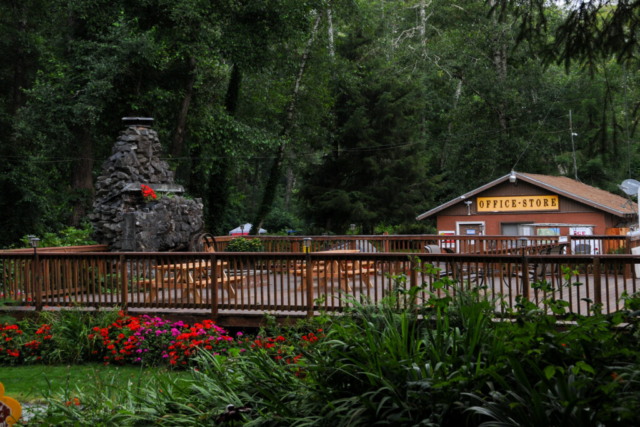
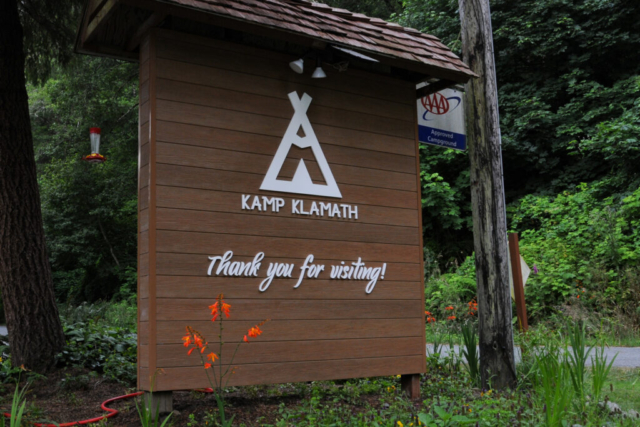
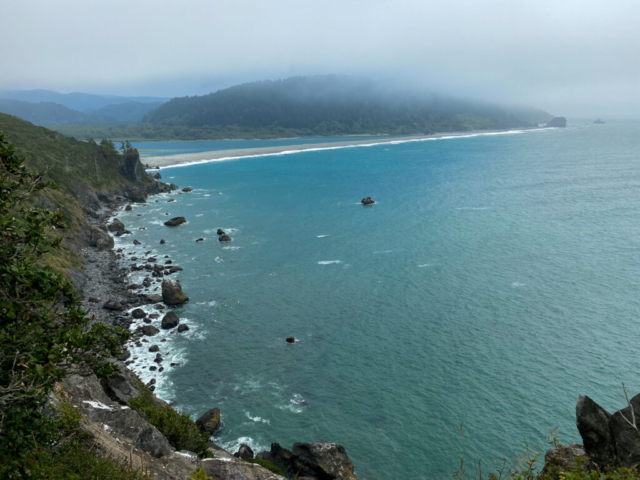
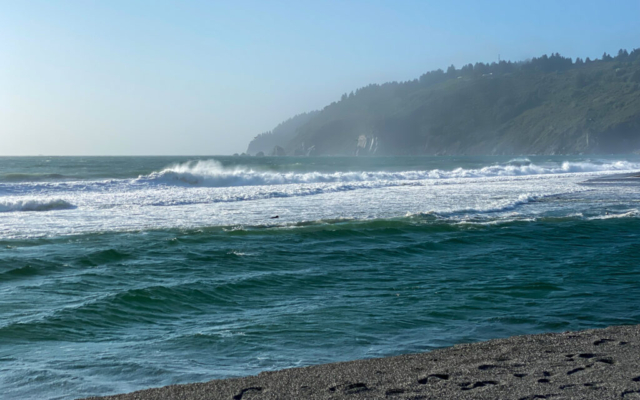
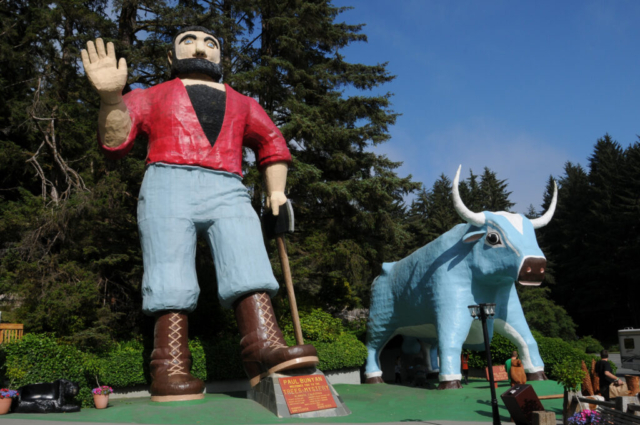
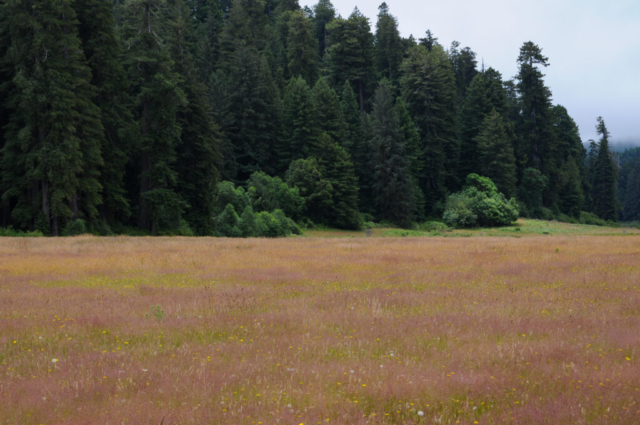
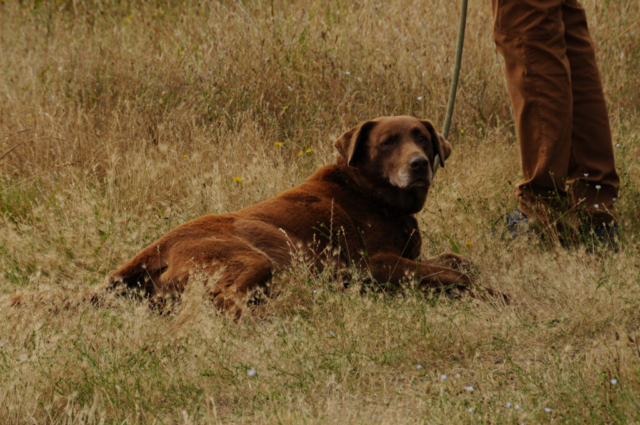
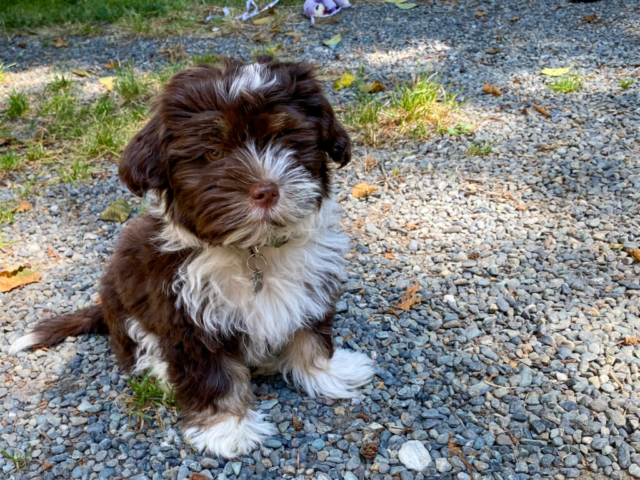
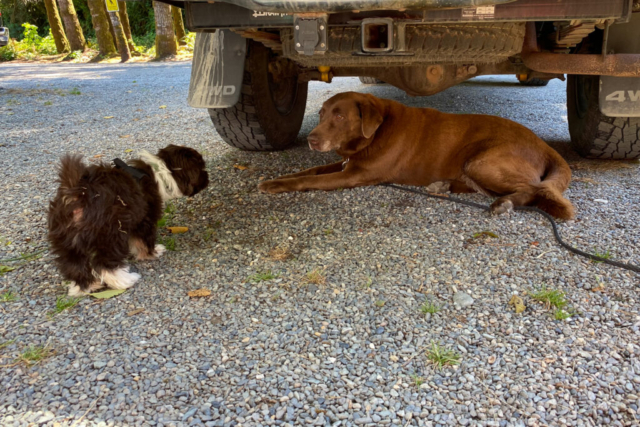
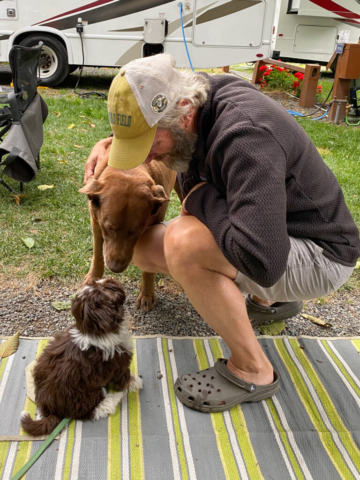
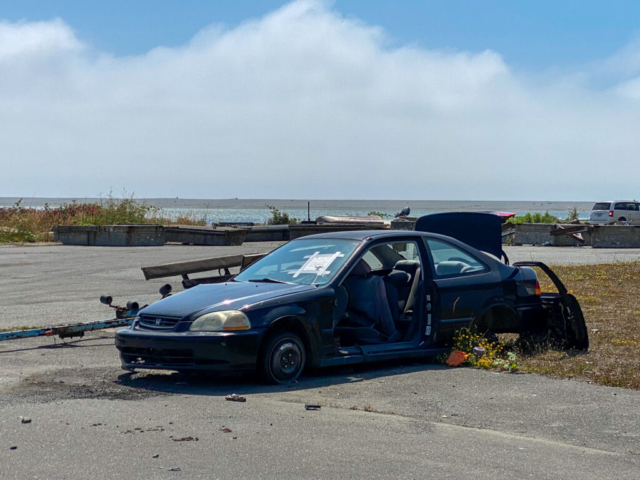
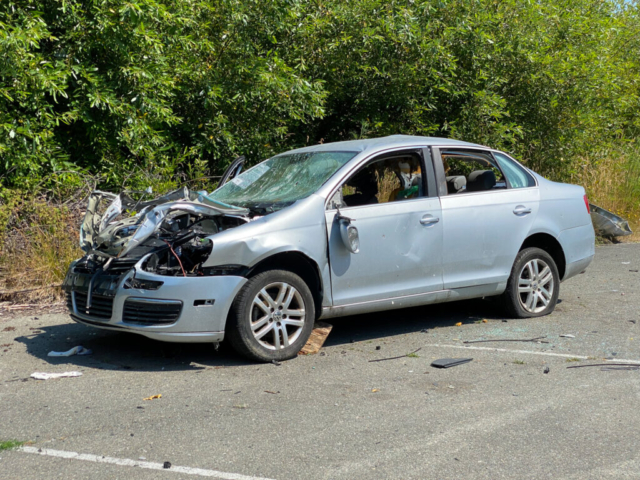
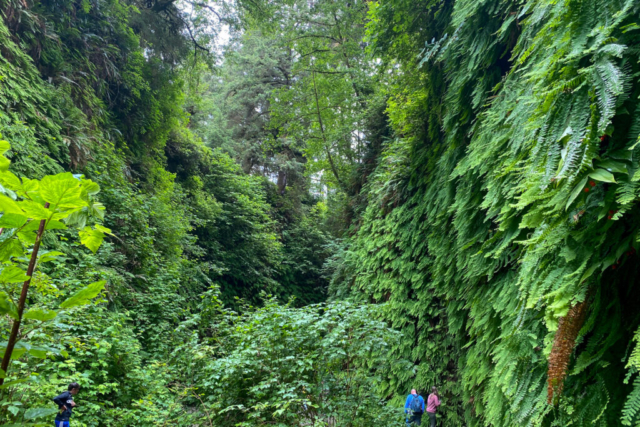
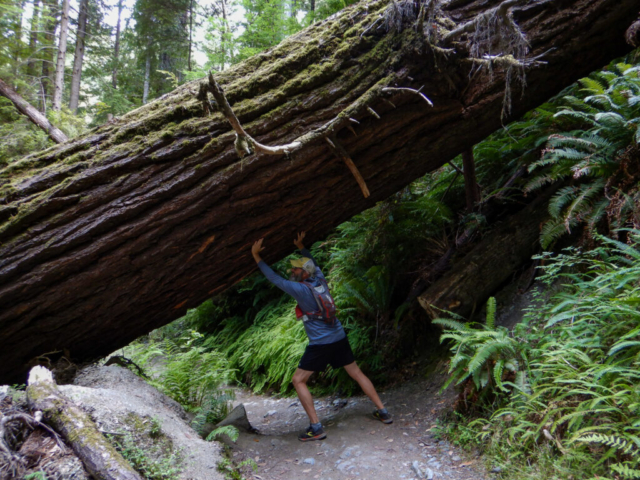
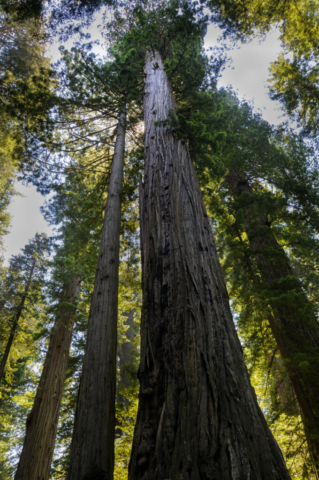
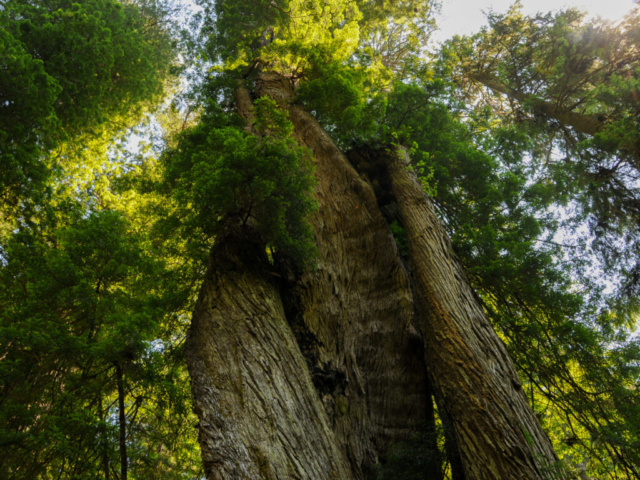
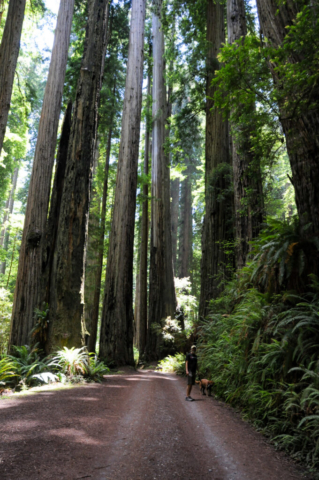
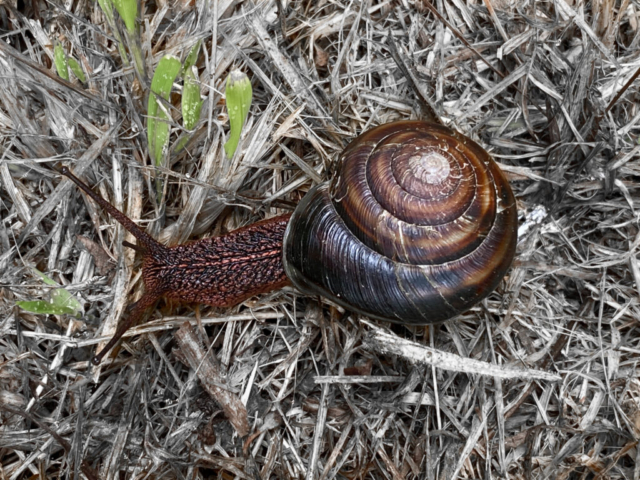
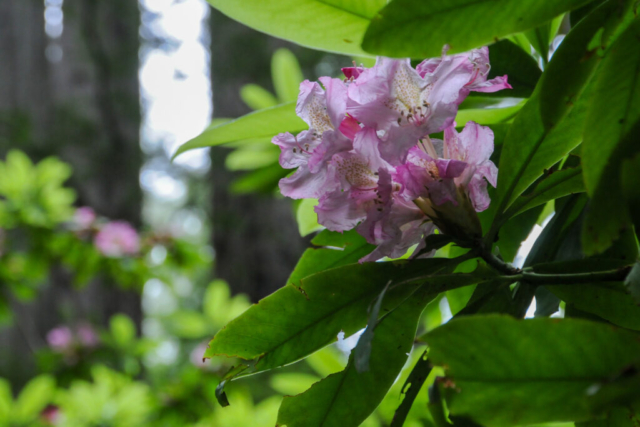
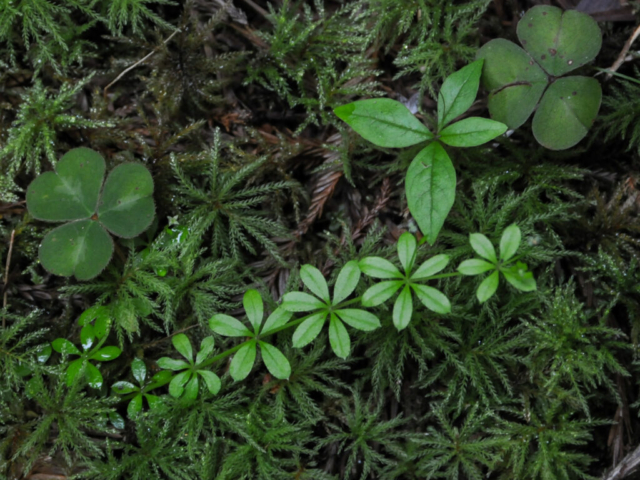
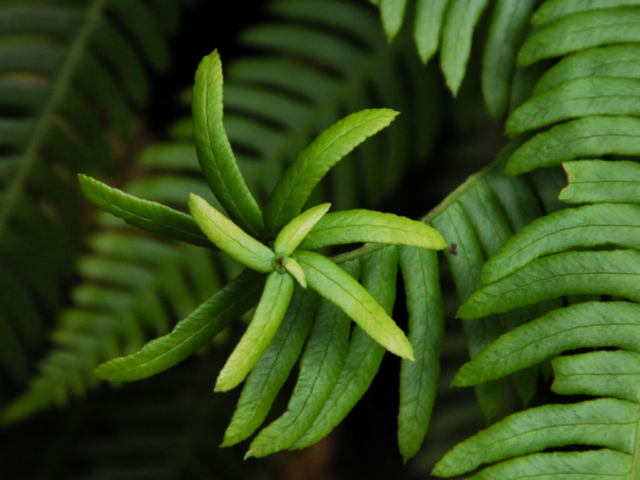
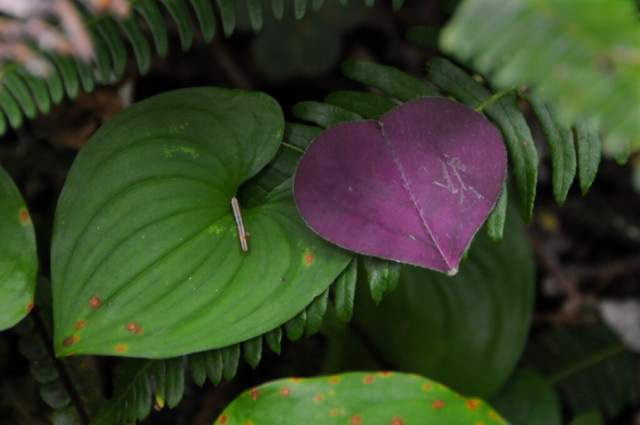
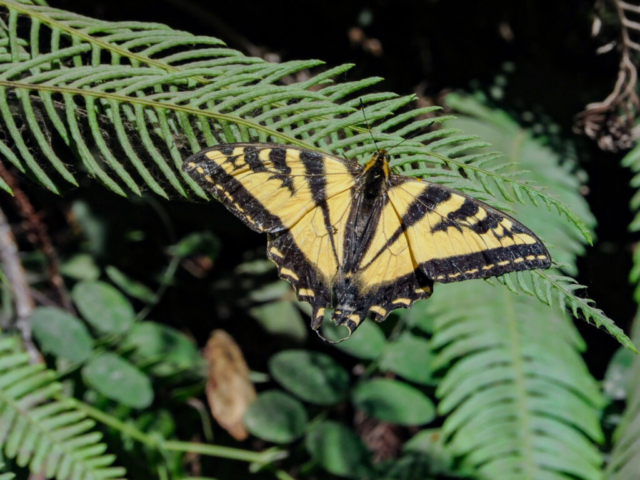
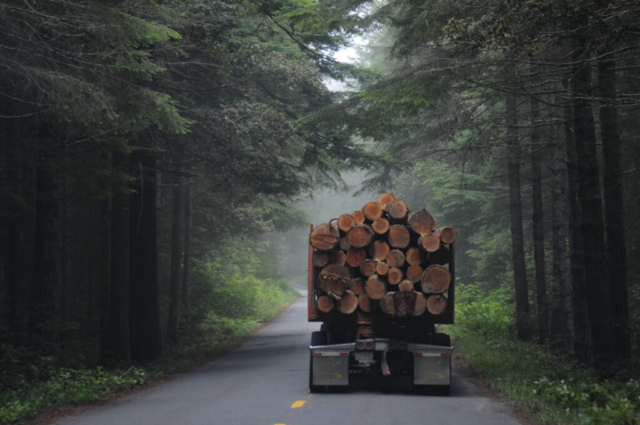
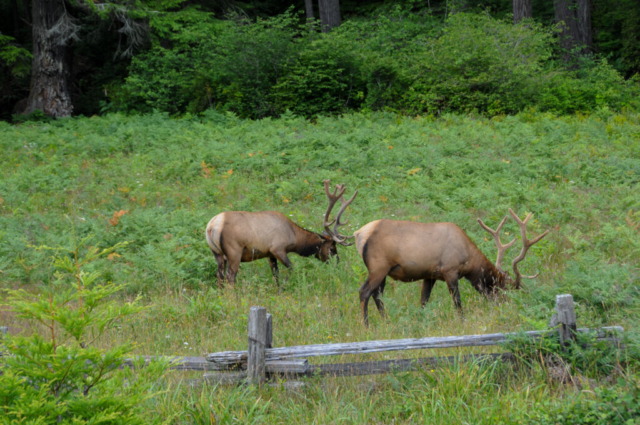
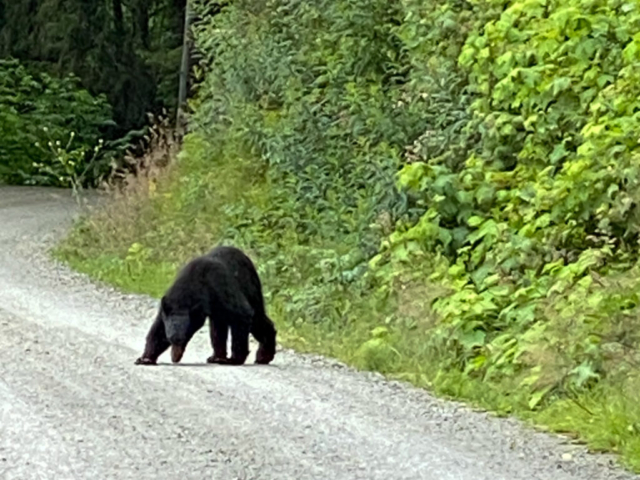
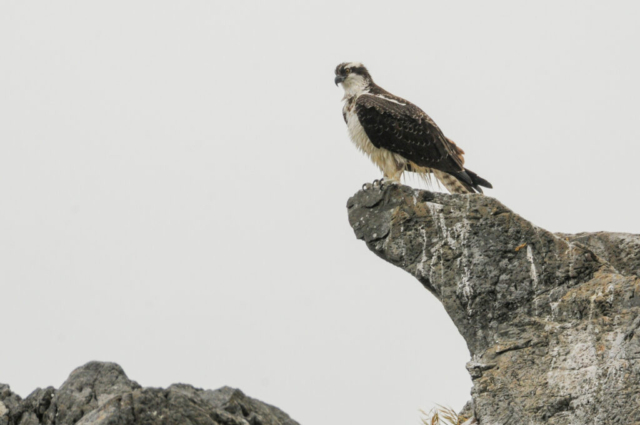
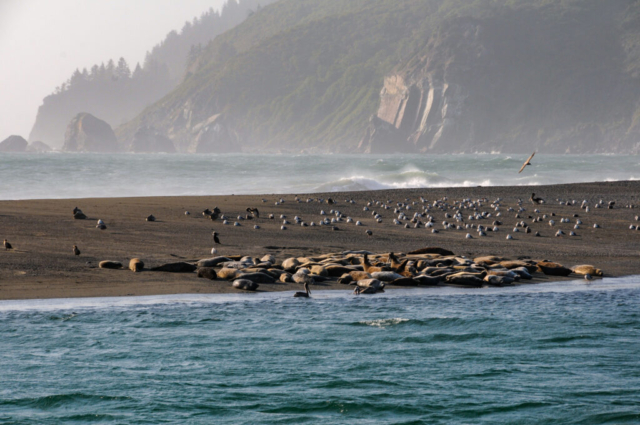
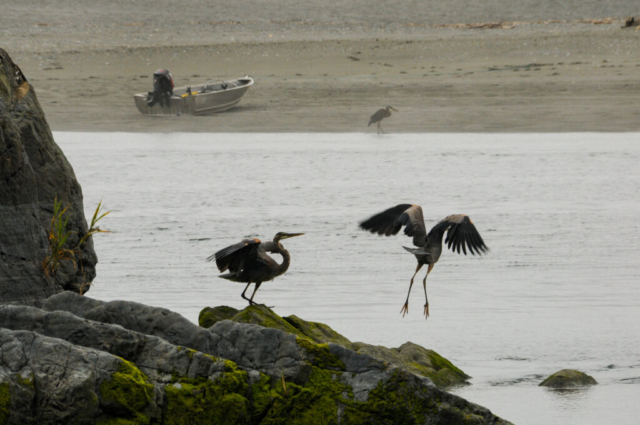
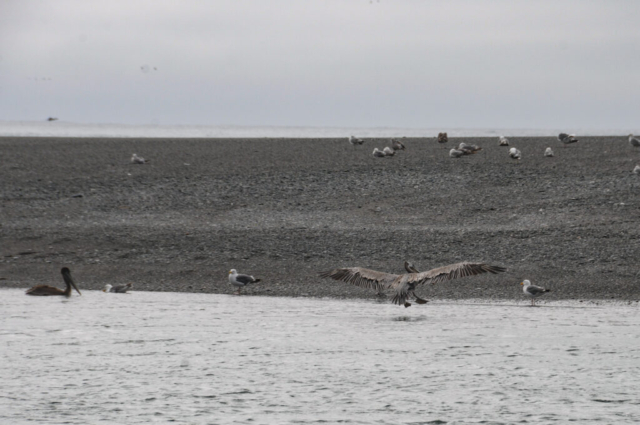
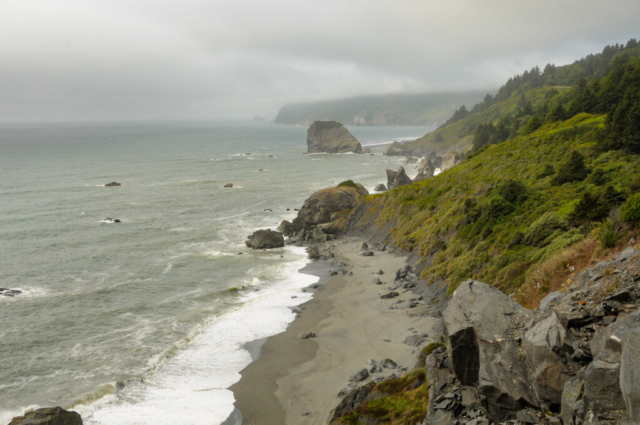
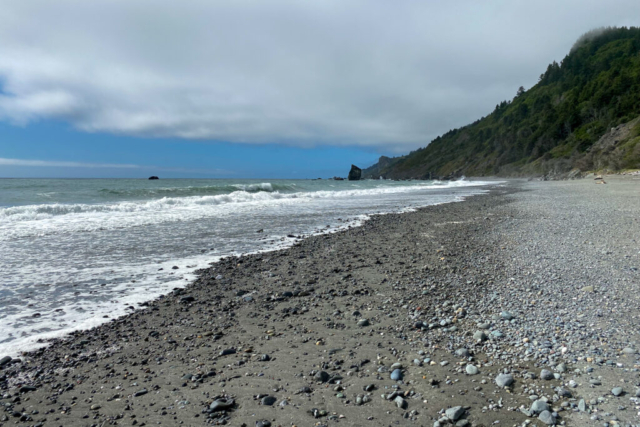
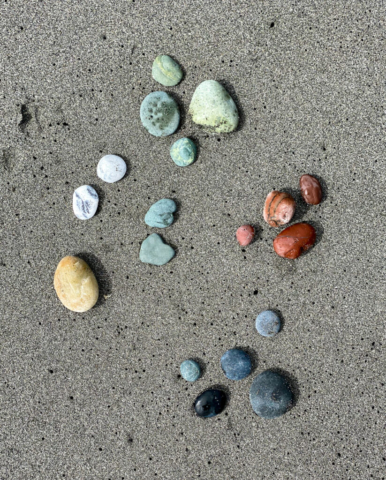
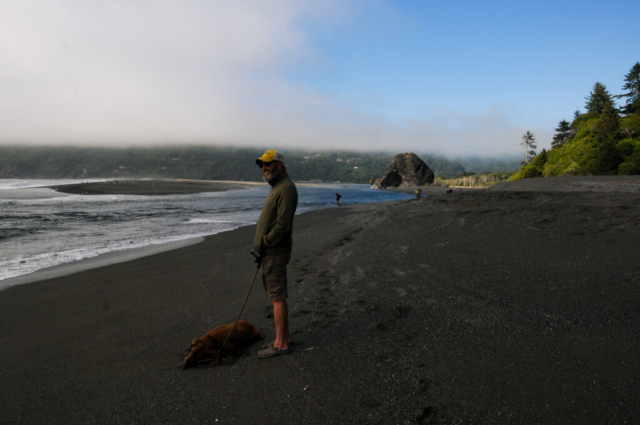
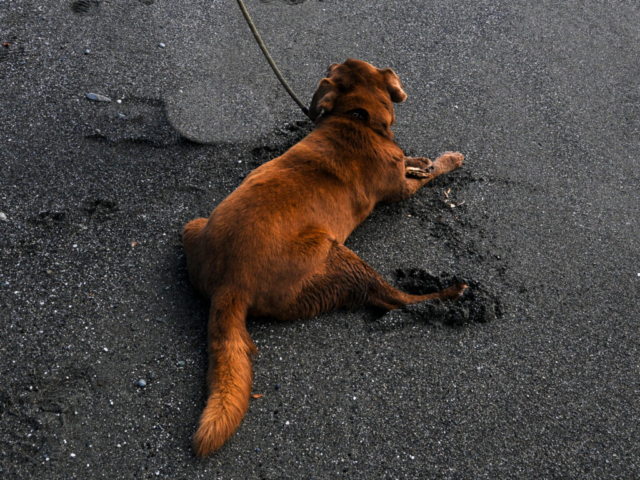
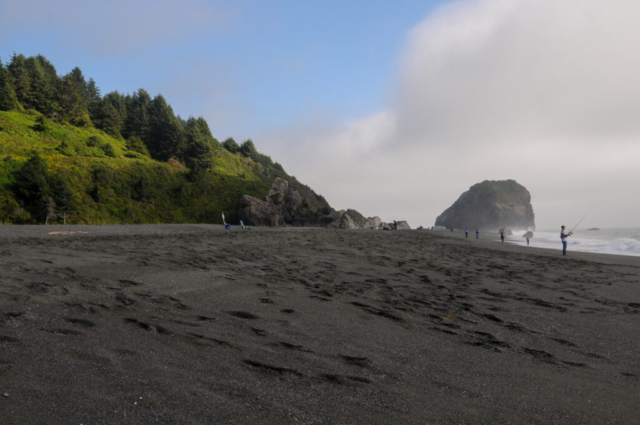
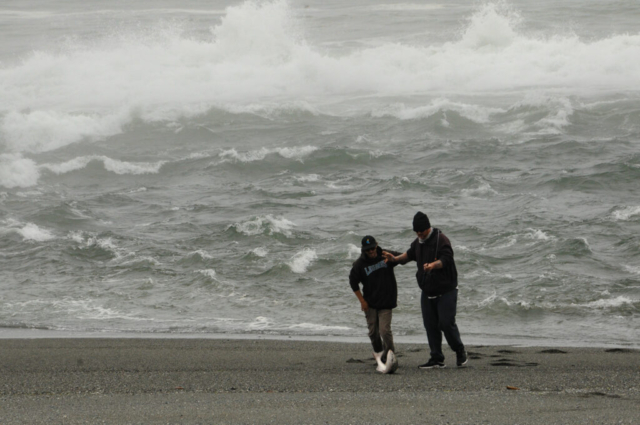
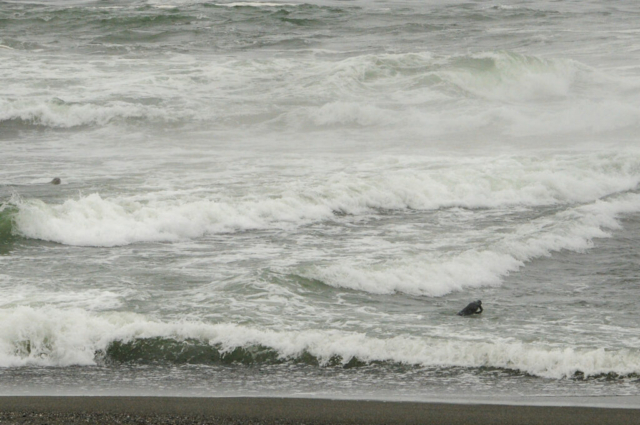
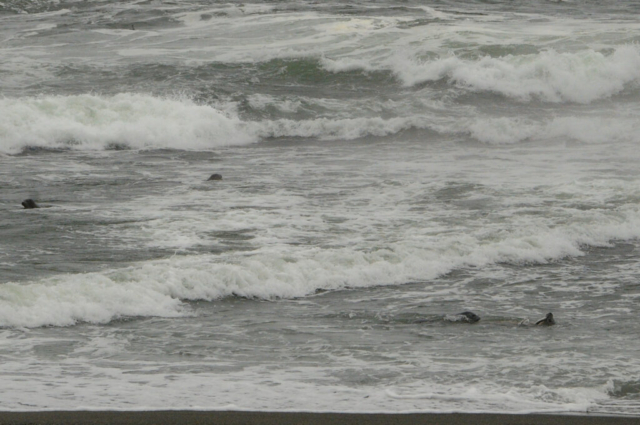
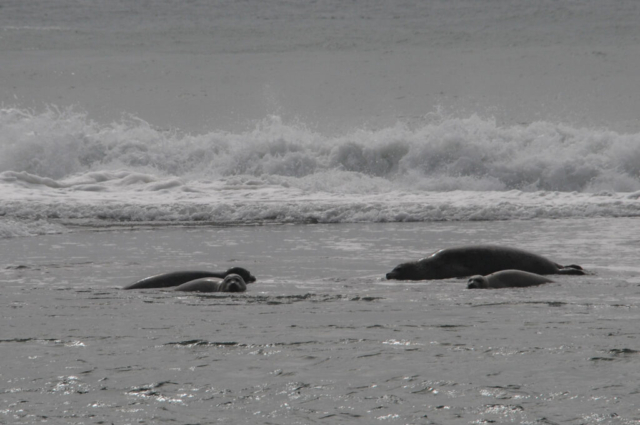
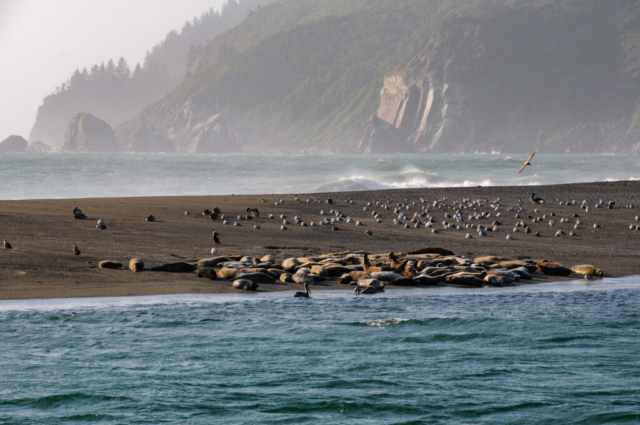
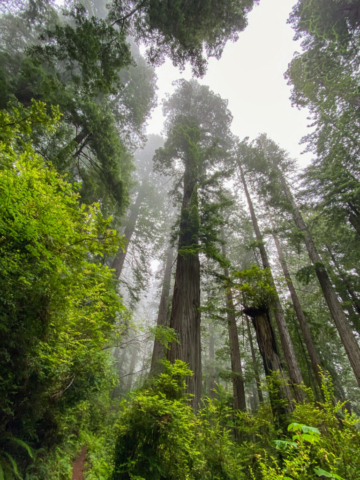
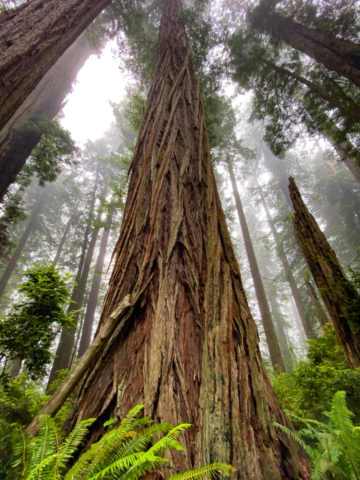
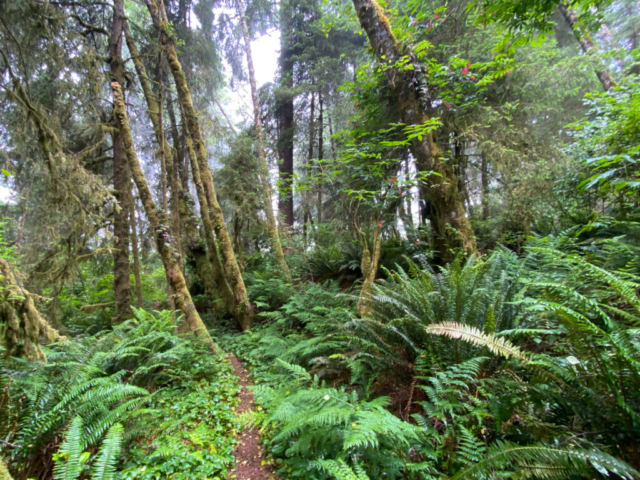
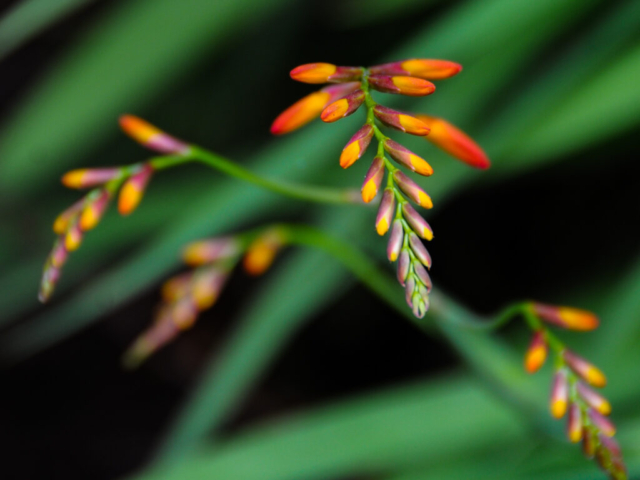
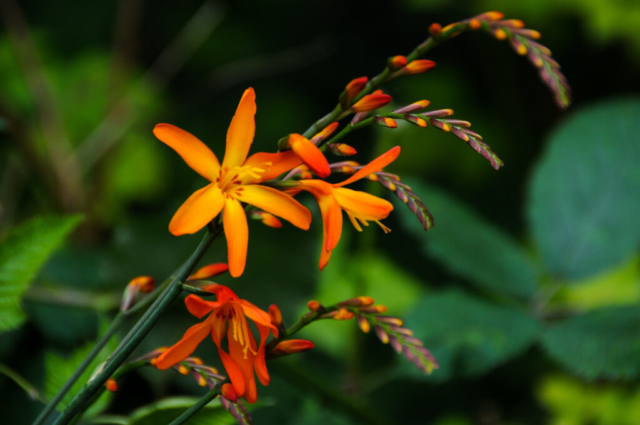
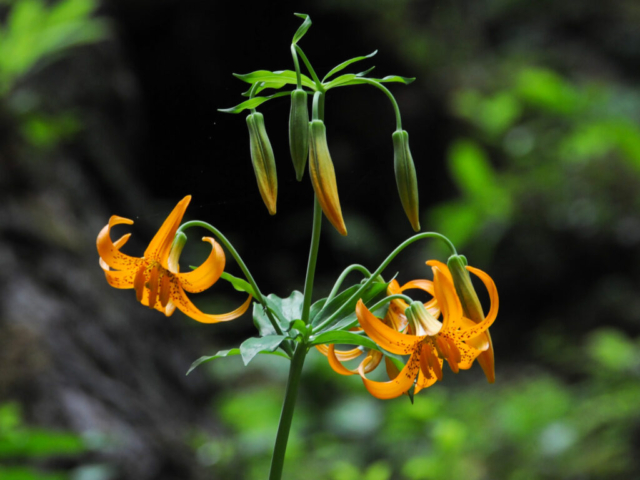
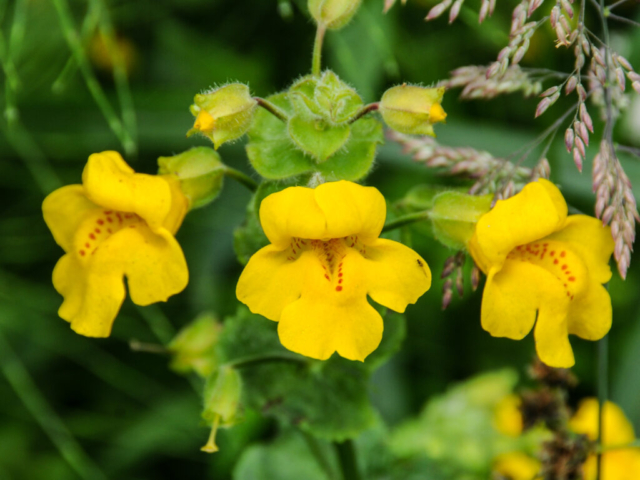
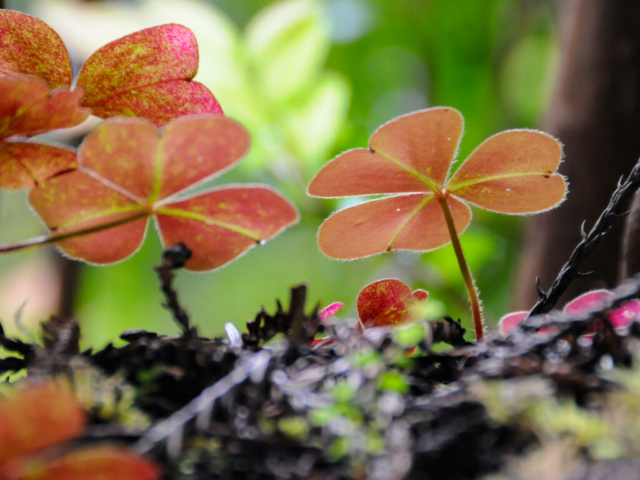
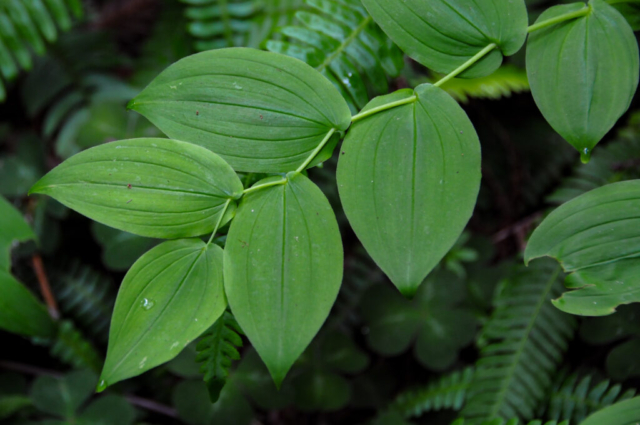
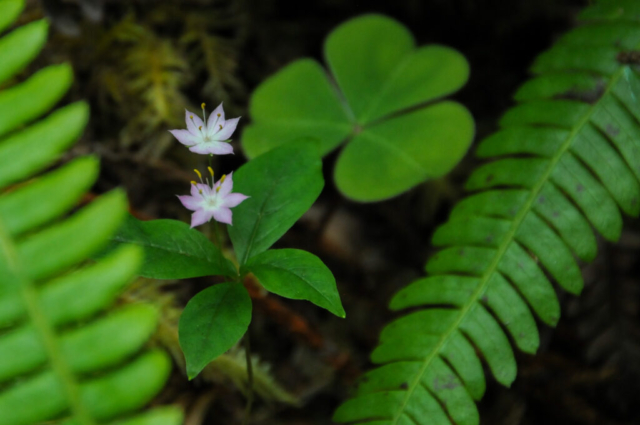
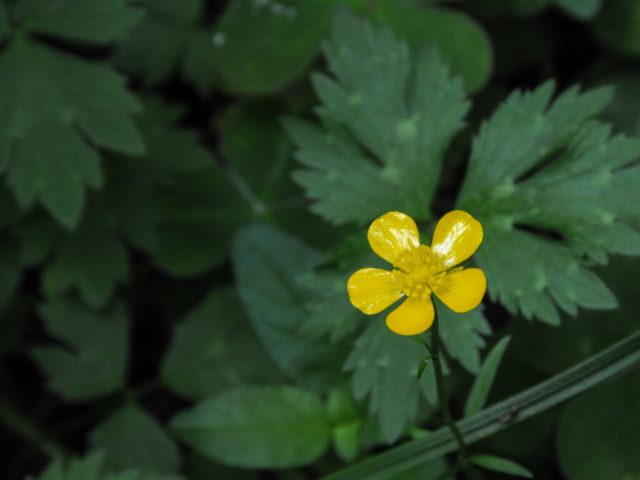
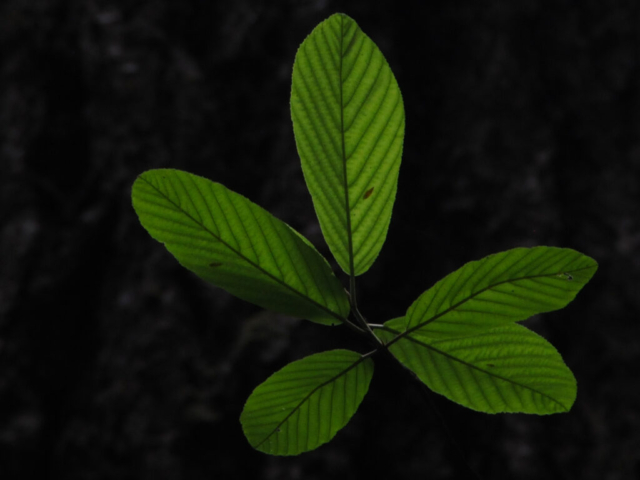
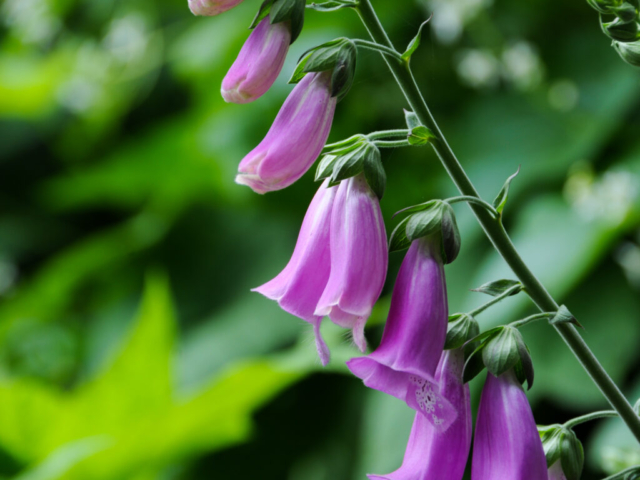
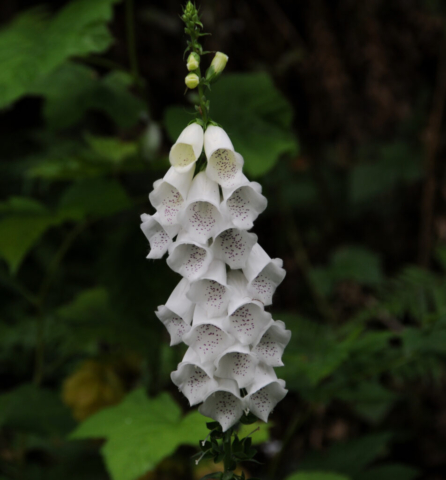
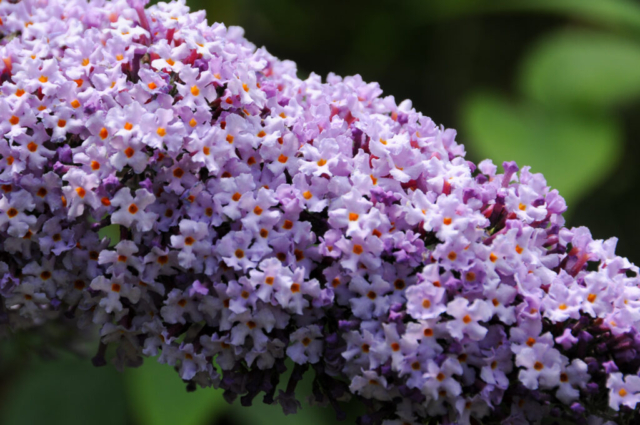
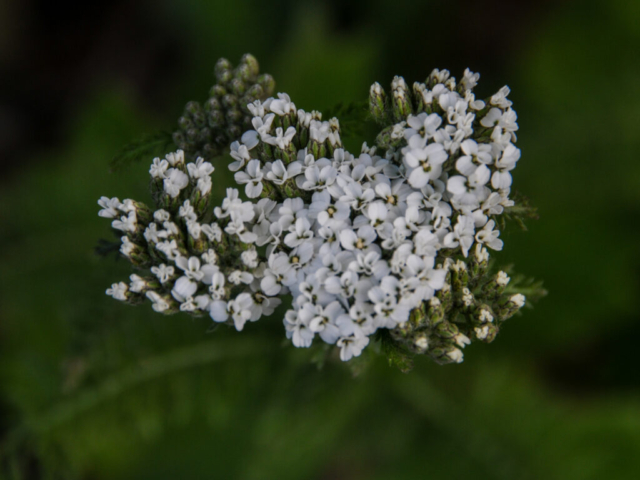
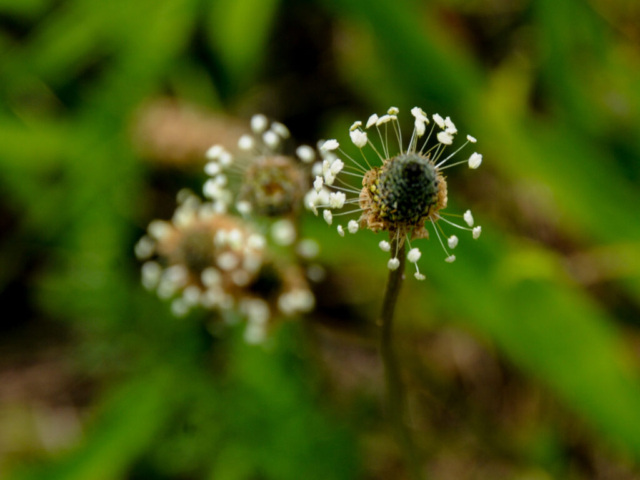
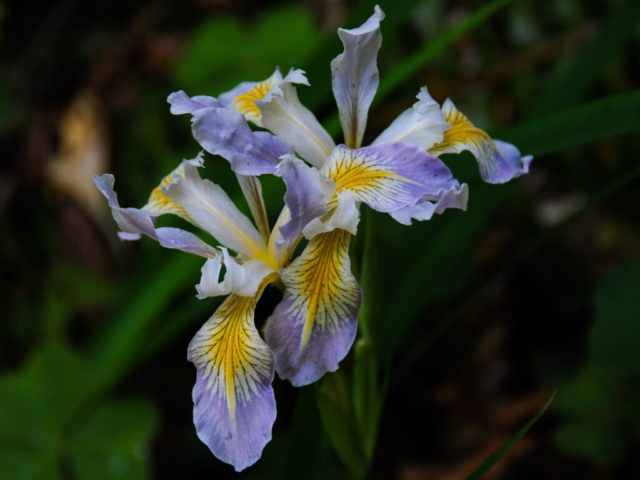

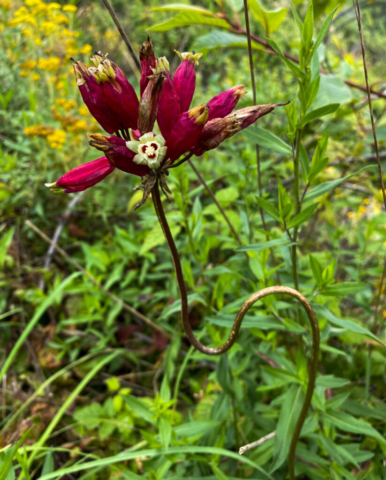
Comments
5 responses to “Kamp Klamath: The Final Entry”
Thank you for your wonderful pictures and inspiring travelogue
Great writing, looking forward to having that beer when you’re back in Golden.
Thank you for sharing your adventure!!! Keep writing and photographing!!
What will the next journey be….
❤️
It has been fun reading about your great A-liner adventure with amazing pictures. Stay warm and we hope to see you when you return to Golden
What a great trip you had with so many nice places, great pictures and intriguing stories. Thanks for sharing, nice to have you home again.